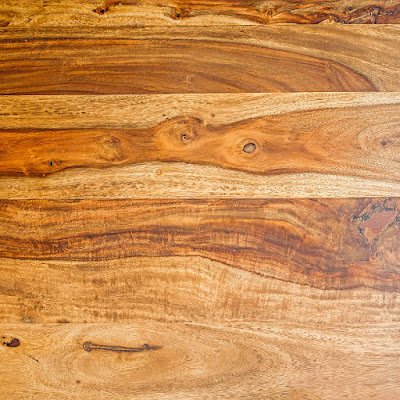Introduction
Paulownia wood, often referred to as the “princess tree,” is a versatile and highly prized material in the world of woodworking. Its unique properties and wide range of applications have made it a favorite among craftsmen and builders alike.
Paulownia, also known as the Empress Tree, is native to East Asia and is named after Anna Pavlovna of Russia, a Dutch princess. This beautiful tree boasts large, heart-shaped leaves and is renowned for its rapid growth, making it an environmentally friendly choice for wood production. In this article, we will delve into the fascinating world of paulownia wood, exploring its origins, characteristics, and the numerous ways it can be used in various projects.
The Characteristics of Paulownia Wood
Rapid Growth and Sustainability
One of the most outstanding attributes of Paulownia wood is its rapid growth. This deciduous tree species is renowned for its ability to reach maturity in a relatively short time frame, typically within 5 to 7 years. This rapid growth rate is advantageous for sustainable forestry practices, as it reduces the pressure on natural forests.
Lightweight and Versatile
Paulownia wood is celebrated for its lightweight nature, making it an excellent choice for various applications where weight is a critical factor. Whether it’s for crafting musical instruments, constructing boats, or creating lightweight furniture, Paulownia wood’s low density is a distinct advantage.
Impressive Strength-to-Weight Ratio
Despite its lightness, Paulownia wood possesses an impressive strength-to-weight ratio. This means it can withstand substantial loads while remaining easy to handle and transport. This quality is highly desirable in industries such as aerospace and automotive manufacturing.
Exceptional Insulation Properties
In the realm of construction, Paulownia wood stands out for its exceptional insulation properties. Its cellular structure provides natural insulation against both heat and cold, reducing energy consumption in buildings. This characteristic makes it an eco-friendly choice for sustainable construction projects.
Resistance to Decay and Insects
Paulownia wood exhibits remarkable resistance to decay and insects, thanks to its natural compounds. This resistance reduces the need for chemical treatments, aligning with modern eco-conscious practices.
Beautiful Grain and Aesthetics
The wood’s grain pattern and aesthetics are another reason for its popularity. Paulownia wood boasts a fine, even grain that is highly attractive when used in furniture, cabinetry, and decorative applications.
Paulownia wood’s characteristics, including its lightweight yet strong nature, straight grain with fine texture, and resistance to decay, make it a highly versatile and sought-after material in the world of woodworking. Whether you’re crafting delicate furniture, intricate carvings, or durable outdoor structures, Paulownia wood offers a winning combination of qualities that enhance the quality and longevity of your projects.
| Scientific name | Paulownia Tomentosa |
| Average weight | 8 lbs/ft3 (280 kg/m3) |
| Janka Hardness | 300 lbf (1,330 N) |
| Crushing Strength | 3,010 lbf/in2 (20.7 MPa) |
| Elastic Modulus | 635,000 lbf/in2 (4.38 GPa) |
| Tree Height | 30-70 ft (10-22 m) tall |
Applications of Paulownia Wood
Paulownia wood, known for its exceptional qualities, finds a wide range of applications across various industries. In this article, we explore the diverse uses of Paulownia wood, showcasing its versatility and value.
1. Furniture Manufacturing
Paulownia wood’s lightweight nature and attractive grain pattern make it a favored choice in the furniture industry. It is often used to craft elegant, yet durable, pieces of furniture, including tables, chairs, and cabinets. Its light weight makes it easy to move and arrange furniture within a space.
2. Musical Instruments
The acoustic properties of Paulownia wood have made it a popular material for crafting musical instruments. It is commonly used in the construction of acoustic guitars, where its lightweight yet resonant qualities contribute to the instrument’s sound quality.
3. Boat Building
Boat builders appreciate Paulownia wood for its buoyant properties. It is often used in the construction of lightweight boats and canoes, ensuring they remain easy to maneuver while maintaining structural integrity.

4. Sustainable Construction
Paulownia wood’s natural insulation properties and resistance to decay make it an excellent choice for sustainable construction projects. It is used in building materials, such as wall panels and insulation, to enhance energy efficiency and reduce environmental impact.
5. Outdoor Decking
For outdoor applications, Paulownia wood is an ideal choice due to its resistance to rot and insects. It is frequently used for outdoor decking, where its lightweight yet durable nature ensures long-lasting, low-maintenance installations.
6. Wood Crafts and Carving
Artisans and woodworkers appreciate the ease with which Paulownia wood can be carved and shaped. Its fine grain and lightweight qualities make it a preferred material for intricate woodcraft and carving projects.
7. Eco-friendly Packaging
Paulownia wood’s sustainability extends to eco-friendly packaging solutions. It can be used to create biodegradable and compostable packaging materials, contributing to a reduction in plastic waste.
8. Beekeeping
The lightweight and thermal insulating properties of Paulownia wood are advantageous in beekeeping. It is used to construct beehives that provide a stable environment for bee colonies.
9. Art and Sculpture
Artists and sculptors appreciate the versatility of Paulownia wood for creating sculptures and art pieces. Its ease of manipulation and ability to hold intricate details make it a preferred medium.
10. Paper Manufacturing
Paulownia wood fibers are used in the production of high-quality paper products. The wood’s fine texture and lightweight composition contribute to the creation of smooth, durable paper.
Caring for Paulownia Wood
Paulownia wood, with its unique characteristics and versatility, is a valuable material that deserves proper care to maintain its beauty and longevity. Whether you have Paulownia wood furniture, musical instruments, or other items, here are essential tips on how to care for this remarkable wood:
1. Regular Cleaning

To keep your Paulownia wood items looking their best, start by regularly dusting or wiping them with a soft, lint-free cloth. Dust can accumulate over time, dulling the wood’s natural luster. A gentle wipe-down with a cloth will remove surface dust and prevent it from settling into crevices.
2. Avoid Excessive Moisture
While Paulownia wood is naturally resistant to decay, it’s still essential to protect it from excessive moisture. Avoid placing items made of Paulownia wood in areas prone to high humidity or direct exposure to water. Use coasters, placemats, or tablecloths to protect surfaces from moisture rings and spills.
3. Use Mild Cleaning Products
If your Paulownia wood requires deeper cleaning, use a mild, non-abrasive wood cleaner. Ensure that the cleaner is suitable for wood surfaces and follow the manufacturer’s instructions. After cleaning, wipe the wood dry with a clean cloth to prevent any residual moisture from damaging the finish.
4. Avoid Harsh Chemicals
Steer clear of harsh chemicals, solvents, or abrasive cleaners when caring for Paulownia wood. These substances can strip away the wood’s natural oils and protective finishes, potentially causing damage or discoloration.
5. Protect from Direct Sunlight
Prolonged exposure to direct sunlight can cause wood to fade and lose its color. Position your Paulownia wood items away from direct sunlight or use window coverings like blinds or curtains to shield them from UV rays.
6. Seasonal Maintenance
Wood, including Paulownia, can be sensitive to fluctuations in temperature and humidity. During extreme weather conditions, maintain a consistent indoor environment whenever possible. Use humidifiers or dehumidifiers to regulate humidity levels and minimize the risk of warping or cracking.
7. Periodic Re-Sealing
If your Paulownia wood furniture or outdoor structures have a protective finish, consider re-sealing them periodically. This will help maintain the wood’s natural beauty and enhance its resistance to moisture and wear. Consult the manufacturer’s recommendations for the appropriate sealer and resealing frequency.
By following these care guidelines, you can ensure that your Paulownia wood items retain their elegance and durability for years to come. Proper maintenance not only preserves the wood’s aesthetic appeal but also allows you to enjoy its unique qualities and versatility for various applications.
Conclusion
In conclusion, paulownia wood stands as a testament to nature’s ingenuity, offering woodworkers a versatile and sustainable material with a wide range of applications. Its lightweight yet strong characteristics, along with its resistance to decay, make it a prized choice for furniture, musical instruments, boat building, and more. Embrace the beauty and functionality of paulownia wood in your next woodworking project.
FAQs
1. Is paulownia wood eco-friendly ?
Yes, paulownia wood is eco-friendly due to its rapid growth and resistance to decay, making it a sustainable choice for various applications.
2. Can paulownia wood be used for outdoor projects ?
Absolutely! Paulownia wood’s natural resistance to decay makes it an excellent choice for outdoor projects like fencing and decking.
3. What makes paulownia wood ideal for musical instruments ?
Paulownia wood’s acoustical properties, such as its lightweight and fine texture, make it a popular choice for crafting high-quality soundboards in musical instruments.
4. How can I maintain my paulownia wood furniture ?
Regular cleaning and sealing are essential for maintaining the beauty and longevity of your paulownia wood furniture.
5. Where can I find paulownia wood for my woodworking projects ?
You can source paulownia wood from specialty lumber suppliers or online retailers catering to woodworkers and craftsmen.
Also read: The Beauty of Burl Wood







